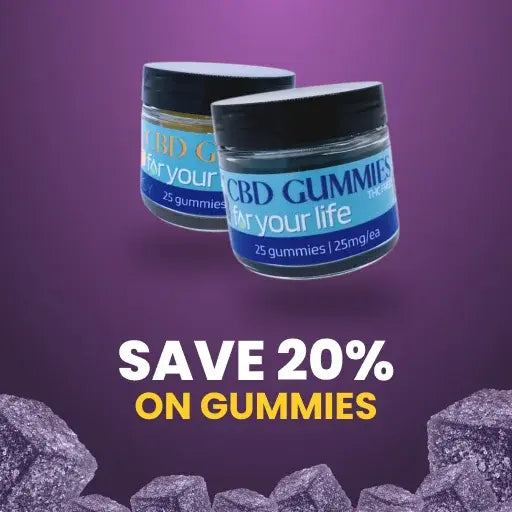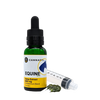How Do I Read CBD Testing Results?

CBD Lab Reports; can anyone read them?! In our recent episode of The CBD Ed Show, we dove into the must-know points to look at when reading CBD testing results, as well as some red flags that you might not have known! The following article mentioned in the podcast is as follows.
When thinking about CBD test results, one of the words that comes to mind is transparency. This goes all the way from the lab, to the company that you’re purchasing your CBD from, to the end consumer; you need to know all the way what’s going on with what you’re ingesting.
You always want CBD products, such as your daily CBD tincture, to have these tests conducted to ensure you that what is on the label is in the bottle.
Erin, the Director of Operations at Desert Valley Testing in Arizona, will be quoted for professional reference to deciphering CBD COAs. Erin joined the Desert Valley testing team in 2015, and believes in providing ethical and accurate data combinations; while making sure the patients receiving the data understand it.
What is a COA, and how do you read it?
A COA, or Certificate of Analysis, is a CBD lab report of tests conducted to show the chemical makeup for the samples provided. In regards to Industrial Hemp plants; cannabinoid profiles, terpene profiles, and contaminants such as heavy metals are profiled.
The entire purpose of third-party-independent lab testing is to provide an unbiased analysis of CBD products. These tests are used to indicate the quality, purity and potency of a CBD sample.
Always remember, there should be no hesitation when you are at a store or on-line shopping for your CBD product, that you have access to the Certificate of Analysis. If for any reason there is hesitation, move on to another product or store. Any website selling CBD products should have their certificates easily available.
To verify the authenticity of the certificate, start at the top of the lab analysis and make sure of the following:
- Name of lab
- Address and phone number
- Website address
- Date test was conducted
Erin recommends to look for the laboratory that tested the sample, and make sure their information is present. (If there is any vagueness, it is not necessarily a good thing. You want to have all of the information right in front of you (back to that transparency word)). So it doesn’t matter where it is actually being tested, but that they you are given that information easily. It should also have who actually was doing the analysis itself, because that is an identification that somebody actually took the time with this specific sample on the lab side, you want to have those two identifiers.
If the test is more than a year old, move on to another product because appropriate testing is not being kept up to date. There should also be a laboratory number, report number, and/or batch number. If any questions arise regarding the test results, call the company and get answers.
Moving down the document, find the item being tested. This item should match up with what you are interested in purchasing. Example: You want to buy the Cannafyl Balance 500mg CBD. This should be clearly labeled on the test; some results even give you a photo of the product for verification.
These units are typically shown on these reports, here’s a quick guide:
- mg/ml = milligrams/milliliters (what’s in the dropper)
- mg/unit = milligrams/total milligrams in the unit (what is in the entire bottle)
- ND = None detected
- NT = Not tested
- LOQ = Limit of Quantification
- RL = Reporting limit
- NA = Not applicable
When reading a CBD Lab Report, it is important to know what type of CBD is being looked at; Full Spectrum, Broad Spectrum or an Isolate. In Cannafyl test results, we are looking at a Full Spectrum CBD. The product tested contains Delta9-THC, CBD, CBDv, CBG and CBC. If this were an Isolate product everything but the CBD molecule would indicate ND in the results area. With Broad Spectrum CBD the ND would appear for THC, but the other cannabinoids will still be present.
This area is important when you are determining if the CBD indicated on the label is what is inside the bottle. Look over this area carefully, if you see anything that looks like it might have been altered, move away from this product because it is possible that the manufacturer has altered the document.
How to decipher a legitimate test from a fake test
Erin: I think it’s happened to me about three times where someone has flat out asked me if they could pay more for a higher test result. I kid you not. This is something that, you know, maybe used to happen quite often. Maybe it does still happen. That’s a nightmare for me. It’s not something that any good laboratory is going to do for you, but it is something that you have to be aware of. So on these CFAs, if you don’t see that lab information, if they don’t answer the phone when you call it, and they don’t get back to you… they probably aren’t the best lab.
Unfortunately, people alter test results. The fact of the matter is that if anything is altered on a certificate of analysis, it is no longer valid. It’s important to reach out to the labs to make sure that it’s not being altered. We are still in a very unregulated industry. There are people that will create a fake result so they can provide it to their customers.
While looking at results, you can actually tell if they’re edited. The font is different. It’s not lined up correctly. The testing date or the reported date just don’t match up quite right. Some people are better than others; we can’t say that everyone is going to be a glaring error, but that’s also why you want to trust the brand that you are going with. If they only have a test result from three years ago, they probably aren’t testing as frequently as you need them to.
Special Guest: Erin Newcomb with Desert Valley Testing
Disclaimer
By accessing this Podcast, I acknowledge that Cannafyl makes no warranty, guarantee, or representation as to the accuracy or sufficiency of the information featured in this Podcast. The information, opinions, and recommendations presented in this Podcast are for general information only and any reliance on the information provided in this Podcast is done at your own risk. This Podcast should not be considered professional advice. Unless specifically stated otherwise, Cannafyl does not endorse, approve, recommend, or certify any information, product, process, service, or organization presented or mentioned in this Podcast, and information from this Podcast should not be referenced in any way to imply such approval or endorsement. Cannafyl assumes no responsibility or liability for the accuracy or completeness of the content contained in third party materials or on third party sites referenced in this Podcast or the compliance with applicable laws of such materials and/or links referenced herein. Moreover, Cannafyl makes no warranty that this Podcast, or the server that makes it available, is free of viruses, worms, or other elements or codes that manifest contaminating or destructive properties.
Cannafyl EXPRESSLY DISCLAIMS ANY AND ALL LIABILITY OR RESPONSIBILITY FOR ANY DIRECT, INDIRECT, INCIDENTAL, SPECIAL, CONSEQUENTIAL OR OTHER DAMAGES ARISING OUT OF ANY INDIVIDUAL’S USE OF, REFERENCE TO, RELIANCE ON, OR INABILITY TO USE, THIS PODCAST OR THE INFORMATION PRESENTED IN THIS PODCAST.
-
Posted in
cannabinoids, cbd, cbd oil, full spectrum cbd, test results, thc








